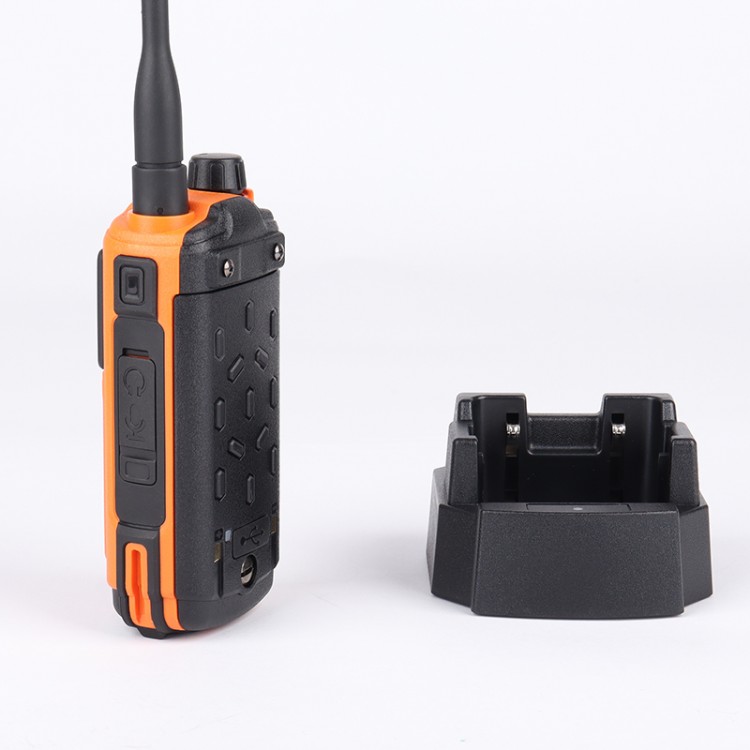
Tampering with your radios is frowned upon and may get you in hot water with the authorities - unless you have a ham radio license.

This “ham” designation isn’t aimed at new users who want to chat while they hunt, hike, or ski it’s for enthusiasts who want to learn the ins and outs of how radios work. Amateur radioĪmateur radios sound like the easiest option for new users, but the name is a little misleading. Licensure isn’t expensive, but it’s an extra step that isn’t necessary for most people and (shocker) it’s unnecessarily complicated. Users need to be licensed to operate on these frequencies. The downside of GMRS radios is that they’re subject to more government regulation. Stepping up to a GMRS radio will get you access to a better signal, increased range, and less chatter from other users. The difference between FRS and GMRS lies in power output. This results in signal quality that’s much stronger and clearer than what you’d get from a CB radio. Like the FRS band, general mobile radio service uses FM radio to communicate.
#EYESPY LINK WALKIE TALKIES REVIEW LICENSE#
We focused on FRS radios for this list, since they don’t require any kind of license or training to operate and come ready to rock out of the box. They’ve become increasingly popular over the years with people who enjoy spending time in the outdoors and families who want to stay in touch on the go.

These FRS radios have limited range and strength of signal because their transmitting power cannot exceed two watts, but they’re inexpensive and easy to use. Easy access to radio communication was in jeopardy at one point, and we owe a debt of gratitude to Radio Shack for stepping in and convincing the federal government to protect certain wavelengths for the general public. When most people talk about walkie talkies, they’re referring to radios that operate on frequencies reserved for the family radio service. If you spend a lot of time on the road, a CB radio can be a solid alternative to a walkie talkie. One of the advantages is the ability to purchase components separately, so you can choose the radio, handset, and antenna that work best for you. These radios are larger than a walkie talkie, so they’re best suited to use in a building or vehicle. No license is required, but FCC rules and stubborn Texas lawmen still apply. Both of these advantages come courtesy of CB radio’s reliance on AM frequencies. Citizen’s bandĬitizen’s band radios are hugely popular with truckers because of their respectable range (anywhere from three to 20 miles, depending on the radio and environment) and low cost. Second, it’s a good idea to make sure you won’t be incurring the wrath of the feds. First and foremost, you need to know that the radios you buy can do what you need them to do. Walkie talkie can take on a few different meanings, but it’s important to know what you’re talking about before you buy a set of radios and hit the push-to-talk button for the first time. Every radio on this list has earned not only our confidence, but the trust of thousands of owners who use them, abuse them, and sing their praises on radio forums all over the internet.

If a product doesn’t make us personally want to use it, it doesn’t get anywhere near our gear guides. We’ve made sure to bring you the best gear recommendations for everything from shit-hits-the-fan survival gear to tactically acquiring a slice of pizza. It matters when you’re using a PRC-152 overseas and it matters when you’re keeping tabs on the kids during a camping trip. Limited range means everyone needs to stay closeĬannot be paired with other devices for more capabilities Why you should trust usĪfter my time in the Marine Corps, I know that maintaining reliable communication is serious business.

We picked some of the best the market has to offer for this gear guide and found some great background information to help you make an informed purchase. If you have some room in your budget, you can up your game with beefy radios that pack all kinds of tech like text messaging and GPS navigation. The good news is that there are a lot of great options, and they don’t cost a whole lot. They’re a huge asset in emergency situations that knock out phone lines and cell service, but they’re also really helpful when you’re traveling in a group, whether you’re hiking a mountain or road-tripping in a convoy across the country. Of course, there are other reasons to look for the best walkie talkies beyond making up games for yourself and your friends. I remember when my buddy and I convinced our Marines that there was a NATO formula used to determine callsigns we had given them, like “frosting,” “sprinkles,” and “albatross.” If your primary reason for shopping for the best walkie talkies is to have an excuse to use callsigns, I can’t blame you.


 0 kommentar(er)
0 kommentar(er)
